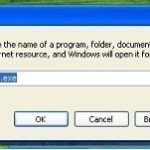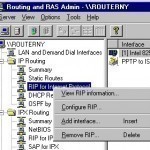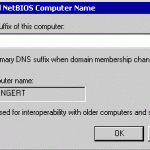Preparing for Migration to Exchange Server 2003 For number of services running in existing Exchange 2000 environments, you first have to move these services to other servers, and then remove the services so that the upgrade to Exchange Server 2003 can occur. The services listed here have to be removed before migrating to Exchange Server 2003: Instant Messaging Service (IMS) Key Management Service Microsoft Chat Service Microsoft Exchange Connector for Lotus cc:Mail Microsoft Mail Connector In addition to the removing the above mentioned services, the following requirements have to be Read More
Exchange Server 2003 Overview
Understanding the Different Messaging Systems With shared-file messaging systems, directories and files typically reside on a file server. The structure of directories and files at the centralized file server location are commonly called post offices. The post office is the mail store for many users. Users have to access a mail box in the post office in order to access email messaging. When a user sends a message, the message or written data is stored in the directories of the post office. The recipient of the message next identifies the Read More
How to Remove the Administrative Mode in Vista
The new MS Vista operating system is trying to be much tougher on viruses, trojan horses and other forms of malware. However, to implement this tough approach, Vista employs UAC (User Account Control) as the default setting. Vista UAC while is a great tool and resource for many to have on their computer, it does get on some peoples nerves. For experienced or power users, it can be down-right annoying, the reason being that any function that can limit security requires an administrator-level user level. Moreover, one must click through Read More
Understanding Internet Connections
Internet Connectivity Introduction In most organizations and networks today, Internet connectivity is no longer an additional option, but a necessity. Most organizations that have a networking environment need to provide its employees or users with some form of connectivity to the Internet. E-mail and Web sites have evolved into being important mechanisms for a vast number of organizations. Internet connectivity or connections support a company's business in a number of ways. Company employees use the Internet for a number of reasons, including the following: Exchange e-mail with other employees at Read More
What is Mrtstub.exe?

Mrtstub.exe (Mrt.exe) is a process that runs on all Windows Operating System versions. It is a malicious software that downloads and installs other malicious software. Mrtstub.exe can almost always be found directly on the computer’s primary hard drive, can hide itself in a randomly named folder, and does not have a visible window. If the user discovers Mrtstub.exe or Mrt.exe on his/her computer, it is highly recommended that the process is stopped and removed immediately. How Mrtstub.exe Works Mrtstub.exe infiltrates the computer via third party software, temporary Internet files, Read More
Installing-IPv6
Understanding Coexistence and Migration Co-existence occurs when you have IPv4 nodes or IPv6 nodes communicating via an IPv4 infrastructure, an IPv6 infrastructure, or an infrastructure that contains both IPv4 and IPv6. To communicate with IPv6-only nodes, IPv4-only nodes can use a translation gateway or an IPv4 to IPv6 proxy. Migration is only totally realized when all your IPv4-only nodes are converted to IPv6-only nodes. In RFC 1752, the following migration standards were specified: You can deploy IPv6-only hosts at any time. You can upgrade an existing IPv4 host to IPv6, Read More
How to Convert FAT32 to NTFS
DISCLAIMER: This is a one way process and all steps must be taken to ensure that data is backed up before attempting. The author is in no way responsible for loss of data or damage to disk, data, and the computer as a whole. Before beginning, become familiar with the following terms : FAT : File Allocation Table is a computer file system architecture that Bill Gates and Marc McDonald developed in the late 1960s and 1970s. It is the main file system in use for MS-DOS and the earlier Read More
DHCP Relay Agents
The Dynamic Host Configuration Protocol (DHCP) is a service that runs at the application layer of the TCP/IP protocol stack to dynamically assign IP addresses to DHCP clients, and to allocate TCP/IP configuration information to DHCP clients. This includes subnet mask information, default gateway IP addresses, DNS IP addresses, and WINS IP addresses. The DHCP protocol is derived from the Bootstrap Protocol (BOOTP) protocol. The DHCP server is configured with a predetermined pool of IP addresses (scopes), from which it allocates IP addresses to DHCP clients. During the boot process, Read More
Configuring Remote Access Clients

Remote Access Overview The Routing and Remote Access service (RRAS) is integrated in Windows 2000 and Windows Server 2003 and provides connectivity for remote users and remote offices to the corporate network. RRAS make it possible for remote users to perform their tasks as though they are actually physically connected to the corporate network. A remote access connection enables services such as file and print sharing to be available to remote users. To access network resources, remote access clients can use standard Windows tools. Dial-up networking allows a remote access Read More
Renaming Domains

An Overview of the Domain Renaming Feature With the Windows NT 4 domain model, you had to completely rebuild an existing domain if you wanted to change the names of any of your existing domains. In Windows 2000 domains, you also have to create a new domain but the Active Directory Object Manager can be used to migrate existing users, groups and computers into the new domain. The Active Directory Object Manager plays a vital role in moving the contents of existing Windows 2000 domains into new domain structures. The Read More


Share on: